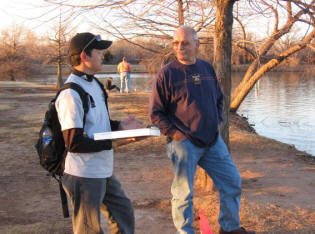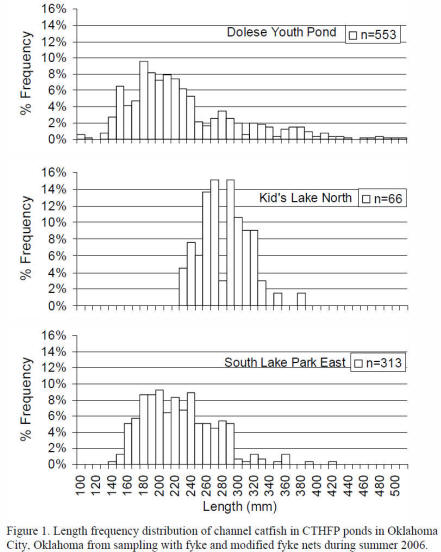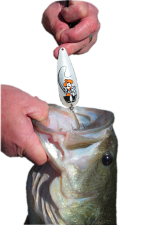Assessment of the Close-to-Home Fishing program in Oklahoma City
(Funded by the Oklahoma Department of Wildlife Conservation through Sportfish Restoration Grant F-73-R)
Project personnel: Dane Balsman, Dan Shoup
Balsman, D.M.*, and Shoup, D.E. 2008. Opportunities for Urban Fishing: Developing Urban Fishing Programs to Recruit and Retain Urban Anglers. Pages 31-40 in R.T. Eades, J.W. Neal, T.J. Lang, K.M. Hunt, and P. Pajak, editors. Urban and community fisheries programs: development, management, and evaluation. American Fisheries Society, Symposium 67, Bethesda, Maryland.
Mahasuweerachai, P.*, Boyer, T.A., Balsman, D.M.*, and Shoup, D.E. Estimating Demand for Urban Fisheries Management: an illustration of conjoint analysis as a tool for fisheries managers. North American Journal of Fisheries Management In Press.

The Close-to-Home Fishing Program (CTHFP) was developed to provide Oklahoma City metropolitan residents with quality fishing opportunities. We conducted angler interviews using a roving creel survey at three ponds over a two-year period to assess angler demographics, angling interests, and level of satisfaction with the fishery in the CTHFP ponds. Additionally, channel catfish were sampled with tandem hoop nets to estimate population size, size structure, and growth rates. While there was some lake-specific variation in angler demographics, anglers at all ponds were predominantly 18-45 year old Caucasian males with at least some college education and a mean household income of $50,000 - $100,000. However, there were also a significant number of young anglers present (approximately 30%). Anglers typically traveled 12-17 minutes to get to the ponds, supporting previous research indicating the importance of placing urban fishing opportunities close to residents.

Channel catfish were among the most sought species and anglers preferred catching a few large fish over numerous smaller fish. Catch rates ranged from 0.05 - 0.3 fish/angler-hour. Angler satisfaction did not directly correlate with catch rate. Anglers indicated they would be happy with more restrictive regulations if it improved fishing. Estimated channel catfish population sizes ranged from and 85 - 550 fish (based on Schnabel mark-recapture method). Size structure and growth rates were poor, therefore, recommend resources be allocated to stocking larger harvestable size (> 12 inches) channel catfish.



